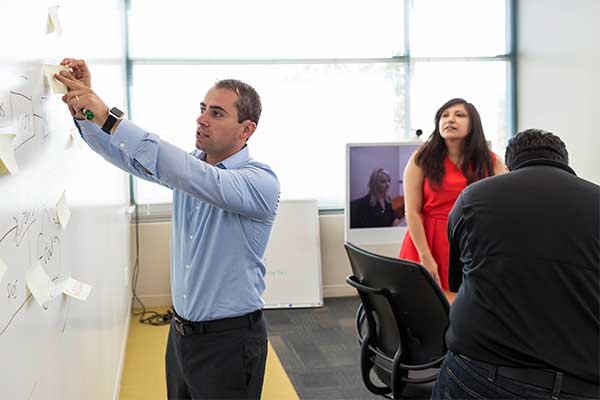Whether you are a Cisco Networking Academy student, a parent, an intern, a rookie, or the president of a large corporation you are going to have to face problems at some point.
Problems which will need solutions to solve them.
They are part of everyone’s life.
Like it or not, we all have to make decisions. And the decisions we make need to solve the problems we face. Whether you want to fix a bug in your network, hit a deadline, secure that promotion or start your own company – however big or small, we all set objectives and goals for ourselves that require us to solve problems.
Being good at problem-solving is in big demand. Employers routinely add it to their wish-list. How many times have you seen “problem solvers wanted” in job descriptions? As far as tech goes, the ability to resolve challenges effectively is fast becoming an essential skill for recruitment.
So how do you sharpen this particular skill? Is there an approach or strategy to problem-solving that can be mastered or improved?
Well, there is plenty of evidence to suggest that a systematic approach built on well-defined steps can help you find solutions that yield real, sustainable, and scale-able solutions – whatever the problem.
Problem-Solving: A Step by Step Approach
1. Identify the problem?
There is no better starting point than defining what it is that needs to be fixed.
It means taking the time to thoroughly review the situation - separating the symptoms from the cause. Making your diagnosis is about understanding what hurts and why. This takes time and might mean doing a bit of research to reveal the underlying issues behind the problem.
2. Determine the Root Causes
Once you have identified what your problem is, you need to figure out why it is.
- What is behind it?
- What is causing it?
- Can it be quantified or qualified.
- What is going on at a core level?
Because as you work towards solving your problem, you are going to want to find a solution that deals with the causes and not just the symptoms, right? So again, take the time to investigate the situation. Collect information, analyze your findings, and refine your diagnosis.
3. Find Multiple Solutions
Being a good problem-solver means thinking innovatively and that means thinking outside the box. Do not settle for the first solution you find. Push the boat out. Find as many alternative solutions as you can. And then find some more.
This might mean looking for solutions in unusual places or from unusual sources – talking to a different set of colleagues, keeping an open mind, or being receptive to the interchange of ideas or perspectives. Whatever if it takes, once you have a set of alternative solutions, subject them all to analysis.
4. Find the Solution that will Work Best
Easier said than done? Not necessarily. Go about it logically. Answer these questions:
- Is it technically viable?
- Is it scale-able?
- Do you have the resources?
- What are the risks? Can they be managed?
- Does your solution benefit as many people as possible?
- Can it be measured? How will you measure it?
5. Plan and Implement Your Solution
Give this part plenty of thought too. Build a really tight plan to execute your solution. You will need to cover who, what, when, and how you will implement your plan.
And just as importantly, you will need to think about how you are going to determine if your solution was a success, which leads us to the final step.
6. Measure the Success of Your Solution
How does it measure against your goals? Have you met your objectives? Have you stayed within budget? Is the work complete? Can you see a measurable outcome?
Evaluating the success of your solution is a vital – and often neglected step – because it shows you clearly whether your solution is the correct one, or whether you need to go back to step one and start over. Because a key part of problem-solving effectively is about being prepared to get it wrong – and to learn from your mistakes.
Remember that all problems are simply puzzles waiting to be solved. Practice using these six steps to build your problem solving acumen and you will find that your abilities being highly valued.


